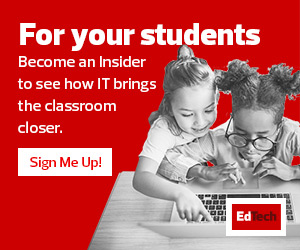McCormick: The first goal is access, and that’s where the funding comes in. The second goal is, how do you begin to think about creating spaces for individualization and personalization of technology tools for students? Then, the final phase is, how are you creating a culture of innovation across the district, where students are encouraged to use the tools of technology for communication, collaboration, critical thinking and creativity? That, to me, is why we should invest so heavily, not only in the devices and in the infrastructure, but also in professional development for our staff and our educators.
WATCH NOW: Work toward digital equity and social-emotional learning in K–12 schools.
Villanueva Beard: We need to ensure that we’re really supporting teachers and that they get high-quality professional development on how to use the tool, how to access it and have it do the work that it’s intended to do.
EDTECH: What resources are needed to make progress toward digital equity?
McCormick: We should think about internet connectivity like any other utility. Our students have learned how to be creative problem-solvers, but I really feel like the next step is to get guaranteed high-speed, high-quality internet into all of our students’ homes.
Villanueva Beard: Only about 37 percent of high schools offer computer science, and it’s worse in low-income communities because you don’t have enough teachers who can teach it. In our upper middle-class communities, kids are getting access to coding and computer science and AI, and all of that has to be integrated into our schools as part of core curriculum.
KEEP READING: Artificial intelligence powers ed tech trends for 2022.
Lim: An initiative like Future Ready, something like that at a national level, is really helpful because it gives you a set of standards. It gives you the framework. There were a lot of resources for it, and they were doing workshops all across the country, and so a targeted effort like that is really helpful.
Glass: Every state is different, but we have regional educational service centers where you can find various resources, as in the actual programs that you can implement, the professional learning opportunities, possibly funding or support for grant funding. I really hope that school districts take this opportunity to look forward and maybe set structures in place.















